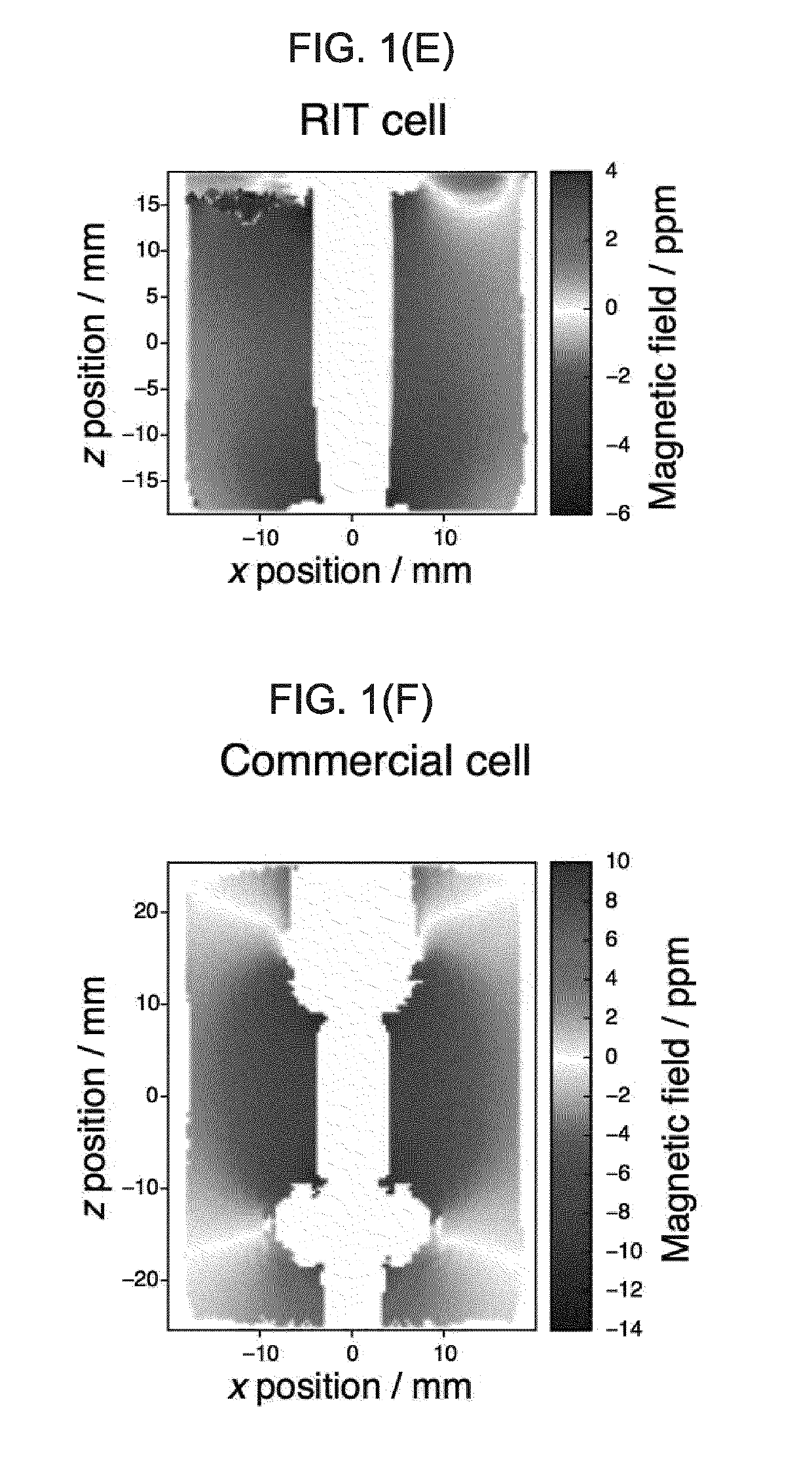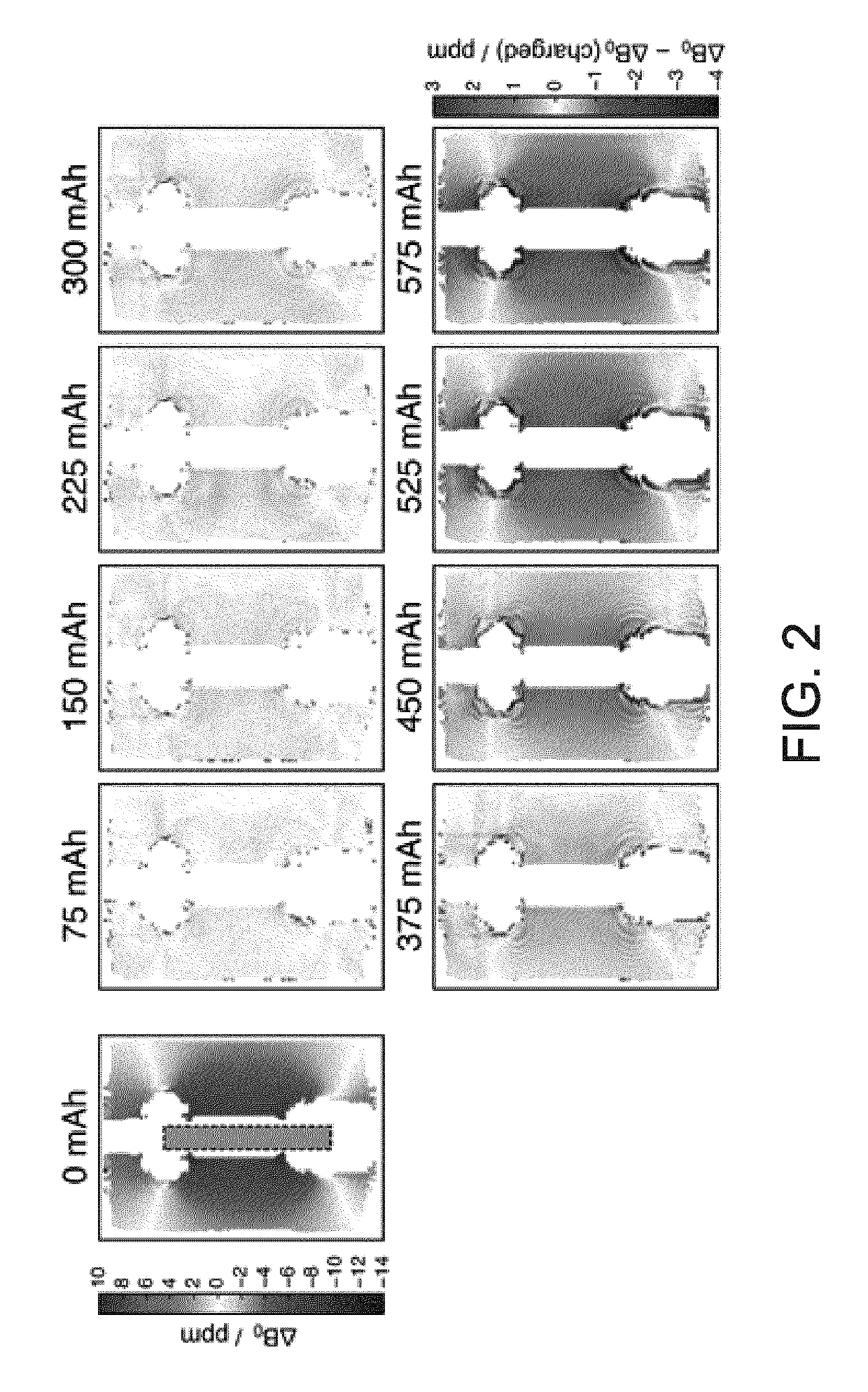System and method for magnetic resonance mapping of physical and chemical changes in conducting structures
a technology of magnetic resonance mapping and physical and chemical changes, applied in the field of magnetic resonance mapping of physical and chemical changes in conducting structures, can solve the problems of slow battery technology progress, unforeseen setbacks, and difficulty in tracking defects inside the cells during operation in a non-destructive fashion
- Summary
- Abstract
- Description
- Claims
- Application Information
AI Technical Summary
Benefits of technology
Problems solved by technology
Method used
Image
Examples
Embodiment Construction
[0055]In general, the system and method described in this application relate to indirectly detecting the conductivity distribution and the distribution of magnetic susceptibility of conducting structures by measuring the space around it with NMR spectroscopy or MRI. In the embodiments described in this application, the conducting structure is a battery. However, the present application is not limited in this regard. The conducting structure may be, for example, a capacitor, a supercapacitor, a fuel cell, a catalyst material, etc. The system and method described herein provides cell diagnostics without requiring rf access to the inside of the cell. The method is based on imaging the induced or permanent magnetic field produced by the cell, and connecting it with processes occurring inside the cell. A method of diagnosing a battery includes providing the battery in a magnetic field, immersing the battery in a detection medium, or placing a detection medium in the vicinity of the batte...
PUM
 Login to View More
Login to View More Abstract
Description
Claims
Application Information
 Login to View More
Login to View More - R&D
- Intellectual Property
- Life Sciences
- Materials
- Tech Scout
- Unparalleled Data Quality
- Higher Quality Content
- 60% Fewer Hallucinations
Browse by: Latest US Patents, China's latest patents, Technical Efficacy Thesaurus, Application Domain, Technology Topic, Popular Technical Reports.
© 2025 PatSnap. All rights reserved.Legal|Privacy policy|Modern Slavery Act Transparency Statement|Sitemap|About US| Contact US: help@patsnap.com



